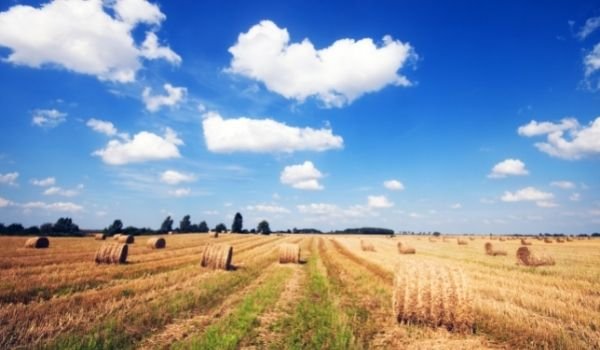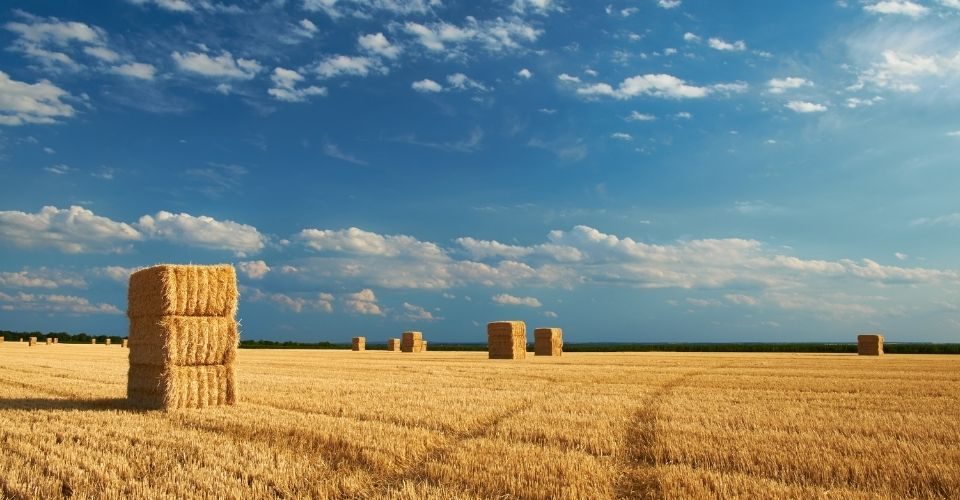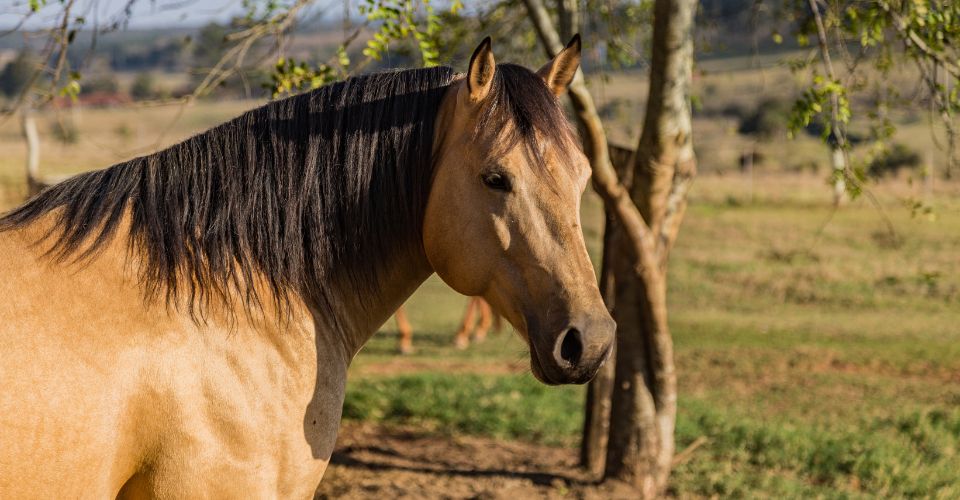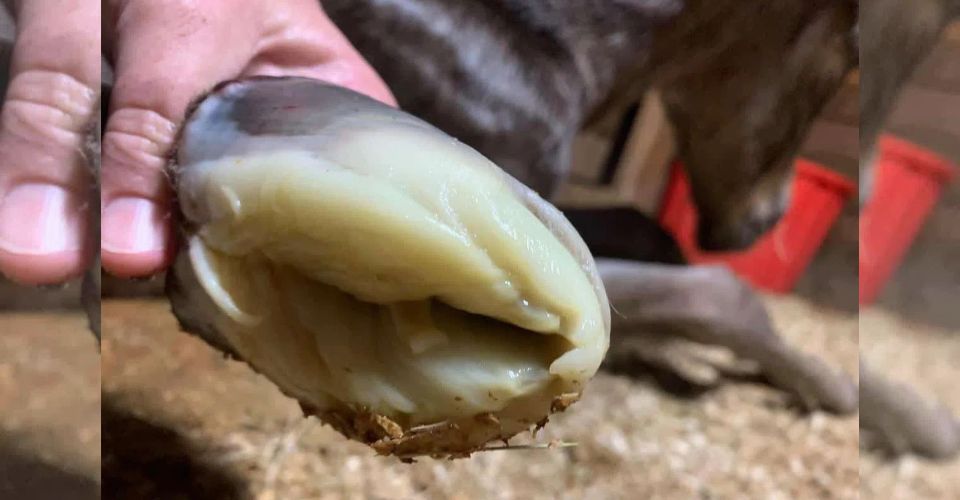Forages and all green plants need a certain level of moisture, heat, light, and, above all – nutrients for proper growth. Novice farmers, unfortunately, do not seem to know what would be the appropriate amount of fertilizer for their acre of a hayfield. Thus they end up either using too much fertilizer or too little, which results in below-par yield.
So, how much fertilizer per acre for hay is ideal? To get down to the bottom of all answers, we have compiled a comprehensive guide to save your time and field. Let us delve into it.
How Much Fertilizer per Acre for Hay Is Ideal?
The amount of fertilizer required per acre of hay is dependent upon the quality of the soil and the type of grass that you are growing in the field. Additionally, it would also be dependent upon the formula of the fertilizer being used, as each fertilizing nutrient has a different required amount. Therefore, a definite answer is not possible; however, we can give you an idea about how much fertilizer per acre of hay by individually looking at each fertilizing nutrient.
Nutrients used in agriculture are of two main types: macro and micro. As their names suggest, macronutrients are required in large amounts, while micronutrients can do the job in a small quantity.
Macronutrients
Nitrogen – 40 Pounds per Ton
Nitrogen plays a vital role in grass growth, giving it a color and making its blades grow solid. The deficiency of nitrogen in the soil stunts the grass’s growth and robs the field of its lush green color.
Perennial grass types used in hay production are very responsive to nitrogen when it comes to their growth. Generally, about 40 pounds of nitrogen per ton of the expected hay yield is recommended. However, note that only applying nitrogen is not sufficient because some other factors work side-by-side to produce an impressive yield. For instance, the soil must be good at holding water, and better management practices should be used.
Most common nitrogen fertilizers include urea and ammonium sulfate; nevertheless, both of them have their pros, cons, and ways of application. For example, the latter has the additional benefit of supplying sulfur to the grass but must be used in a limited amount because of its acidifying nature.
Farming Tip!
Volatile nitrogen loss becomes a problem if urea is used; therefore, it is advisable to apply this fertilizer just before irrigation or rain.
Phosphorus – 60 Pounds per Acre
Plants need phosphorus to grow, which is why farmers worldwide have been using this particular fertilizer for eons. In recent times, phosphorus has been further increased due to its depletion in the soils used for hay or crop production.
Optimally, soils have an adequate amount of phosphorus; however, forage crops have an exceptionally high requirement for it. As per a general recommendation, 60 pounds of phosphorus should be used per acre of a hayfield. This amount can, however, be increased if a greater yield is expected. Also, note that the soil is stripped between 12 and 15 pounds of this element during cutting and grazing per ton. Therefore, a constant supply of phosphorus to make up for the lost amount must be ensured.
Do Not Use Too Much Phosphorus!
If repeated fertilizer treatments occur, phosphorus gets accumulated quickly over the soil. That is why the over-application of liters and manures causes problems. Moreover, manure should be dragged with a harrow to distribute nutrients properly.
Potassium – Depends on Soil Test Results
When hay is produced, the demand for potassium increases. It is so because whenever the field is grazed or cut, on average, up to 60 pounds of potassium gets removed per acre. Since it plays an important role in enhancing crop yield, quality, and immunity, its worth is unmatched, and it must be supplied unabatedly.
The amount of potassium required depends mainly upon the soil test results. For instance, soils that test above optimum (more than 400 lbs./acre) must not be applied with potassium. Likewise, soils falling in the optimum range (between 200 and 400 lbs./acre) must get up to 50 tons of potassium oxide fertilizer per acre, and those having below optimum range (between 40 and 160 lbs./acre) must get around 60 to 90 tons of potassium oxide fertilizer per acre. However, note that above-average yield goals for below optimum soil are unrealistic.

Sulfur – Five Pounds per Ton
Without any exception, sulfur is beneficial for the growth and development of all types of crops. However, since hay harvest removes about five pounds of sulfur per ton, hay yield is adversely affected if the lost amount is not replenished with a fertilizer. Therefore, applying the same amount of sulfur lost during grazing and cutting works fine as a general practice.
Calcium and Magnesium – Depends on Soil Test Results
Calcium is important in supporting plant tissue and better growth, while magnesium is central in keeping stunted growth at bay. Besides, both of these elements are a part of the regular liming program to maintain the target pH in the soil. The appropriate liming material must have an adequate amount of both elements based on the soil test.
Micronutrients
In terms of micronutrients, boron is the most important as it plays a significant role in a plant’s structural maintenance. To get rid of its deficiency in alfalfa hay, about one to two pounds of boron per acre is required before seeding, and this amount should be increased to two to three pounds per acre annually once established.
Dangers of Excess Boron
Using boron in more than recommended amounts can cause severe problems. It can start turning the foliage yellow and brown which can eventually cause complete dryness.

How to Select Fertilizer?
Choosing a proper fertilizer for horse Pasteur can be a bit confusing because of the variety of such products available in the market. However, to make the matter simple, you can go for an NPK (nitrogen, phosphorus, and potassium) fertilizer that contains a good amount of all macronutrients. Besides saving you from the trouble of buying each fertilizer separately, it can also benefit you in terms of price and time.
However, you cannot make the matter of choosing fertilizer that simple if the soil testing results do not come out to be normal. A soil test must not be overlooked because it is the only way to know the fertility status and which type of fertilizer you should go after. Hence, the choice of fertilizer must be made according to the result of the soil test, but remember, never overdo the nutrients as it can lead to several problems. Also, always check the organic certifier before purchasing any fertilizer to make sure that it is approved for use in farming.
When to Apply Fertilizers?
You should set a regular schedule for applying fertilizers to your hayfield to ensure a consistent supply of essential nutrients to the grass.
Mostly, the late-spring season is an ideal time for the application of fertilizers to both cool and warm-season types of grass. However, nitrogen-based fertilizers must be applied during early spring, possibly even before the active growth in the grass begins. Moreover, if the grass is to be cut more than once, nitrogen must be applied immediately after each harvest.
Caution!
In organic farms, micronutrients should not be applied regularly unless soil tests prove their deficiency.
How Much Fertilizer per Acre for Hay Is Ideal? Final Words
The requirement of fertilizer for hay production per acre cannot be guessed unless it is talked about in terms of elements that constitute agricultural fertilizers. Nitrogen, phosphorus, and potassium, for instance, are required in large quantities, while micronutrients can work fine in a small amount. Moreover, factors like soil quality, management, care, and timings also play a crucial role in giving a good crop yield.
If you are not a producer of hay yourself, learn what is a flake of hay to know what and how much you are getting while making the purchase.





